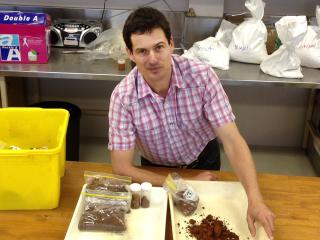Grain growers – especially those intending to sow wheat-on-wheat – have been warned to plan for the risk of crop diseases, in light of survey results that show a general increase in soil borne pathogens.
The Department of Agriculture and Food’s Focus Paddock project, funded by the Grains Research and Development Corporation, has shown a steady increase in the detection of root pathogens across 184 participating paddocks from throughout the wheatbelt.
Research officer Wayne Parker said while around six per cent of paddocks had pathogens present at levels likely to cause yield losses, visual ratings indicated that the majority of paddocks contained low levels of root diseases.
Mr Parker said that while tests had confirmed the presence of disease in the soil, disease expression was dependent on interaction between the host and environment.
“The five-year survey of Focus Paddocks has demonstrated that soil borne pathogens are on the rise, particularly in a wheat-on-wheat crop rotation and, especially, in the Southern Agricultural Region, which can have conditions more conducive to disease,” he said.
“These observations have been backed up by analysis by department plant pathologists, who have found increases in rhizoctonia, root lesion nematode and crown rot.
“Over the five year period from 2010 to 2015 the percentage of paddocks with DNA testing positive to crown rot pathogens increased from 13 to 37 per cent, while root lesion nematode detections increased from 31 to 60pc.”
The detection of rhizoctonia has also increased from 16pc of paddocks in 2010 to 48pc in 2015, based on soil DNA tests.
One positive found by the project was the decline in rhizoctonia DNA after a crop of canola.
“This presents the opportunity to incorporate crop rotations together with sub-seed soil disturbance and specific fungicides to better manage this disease,” Mr Parker said.
“These results reinforce the important role break crops have in managing the risk of crop disease.”
Mr Parker said growers who knew their disease risk status could make more informed decisions to protect their crop and optimise profitability.
“While time doesn’t allow for soil testing to influence break crop choice for this season growers need to keep a monitoring brief on their crops and pastures,” he said.
“Suspect plants and soil should be sent to the AgWest Plant Laboratories for diagnosis.
“There is also extensive information on department’s website on how to mitigate the risk of root diseases, which includes paddock selection, crop sequencing, variety selection and treatment options.”
The Focus Paddock disease monitoring was made possible via collaboration between DAFWA, the Liebe, Facey and Mingenew-Irwin grower groups and the Western Australian No-Tillage Farmers Association, with support from the South Australian Research and Development Institute.
Growers can subscribe to the department’s PestFax e-newsletter to receive updates about disease and pest risks during the growing season.
More information about testing and management options can be found on the DAFWA website.

Media contacts: Jodie Thomson/Lisa Bertram, media liaison +61 (0)8 9368 3937
